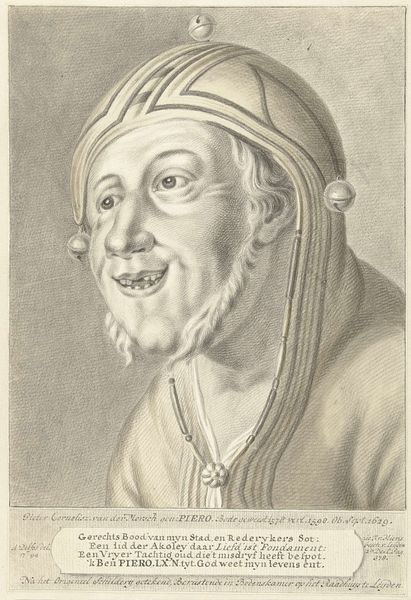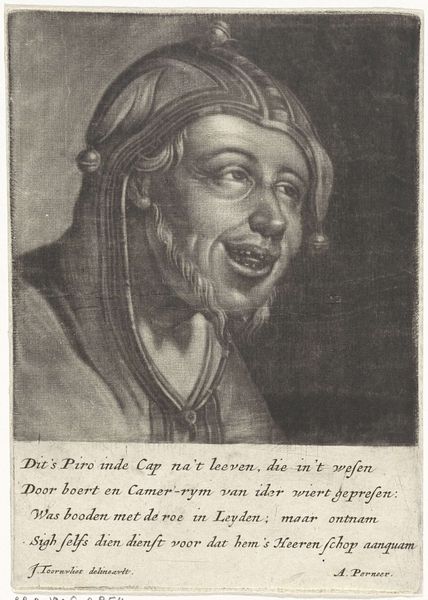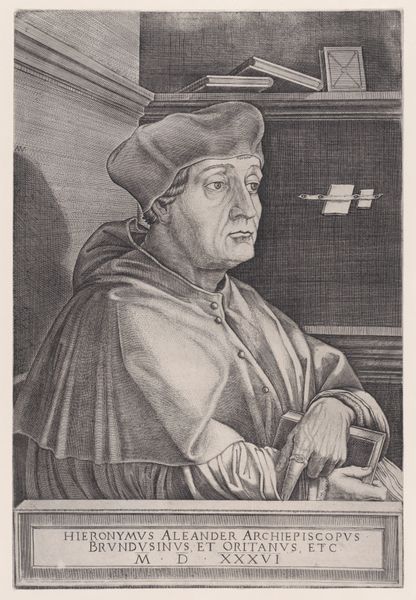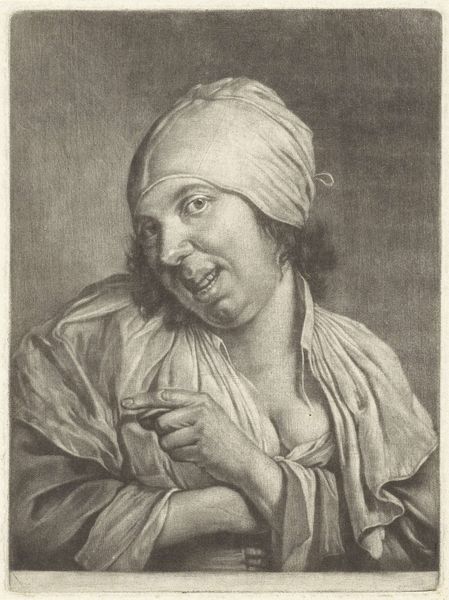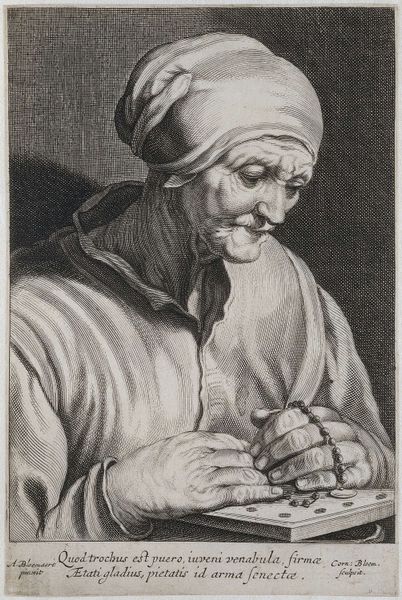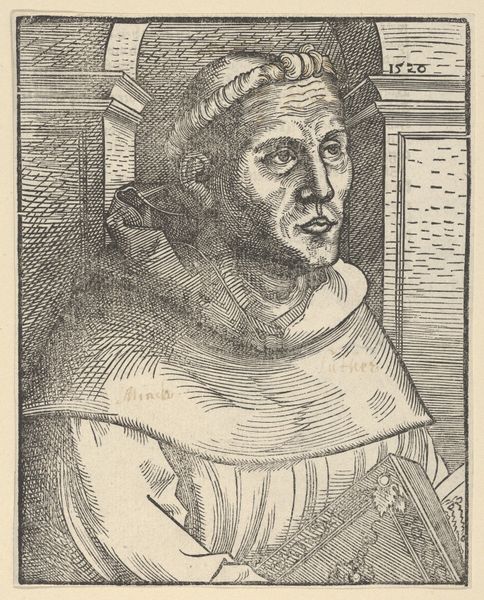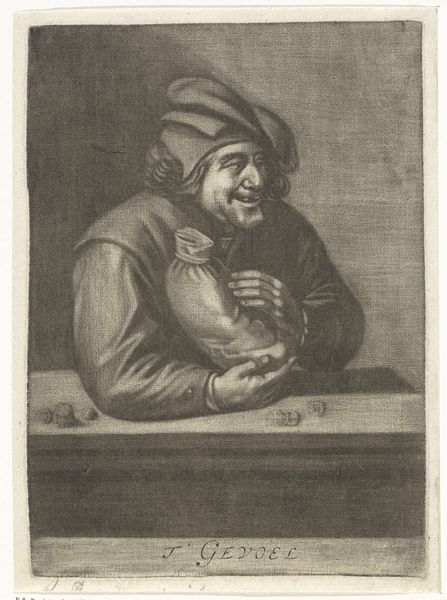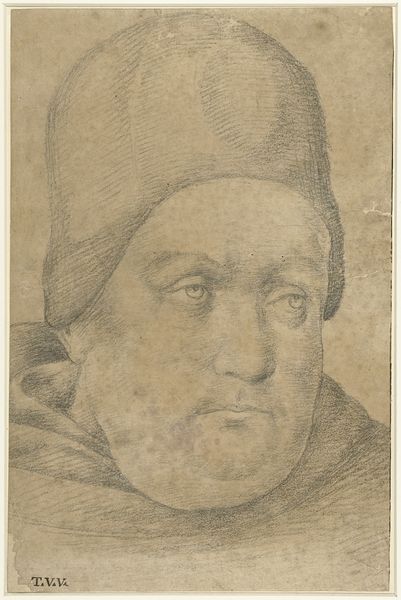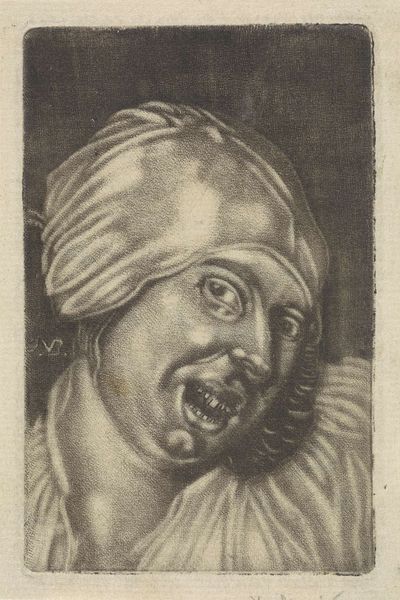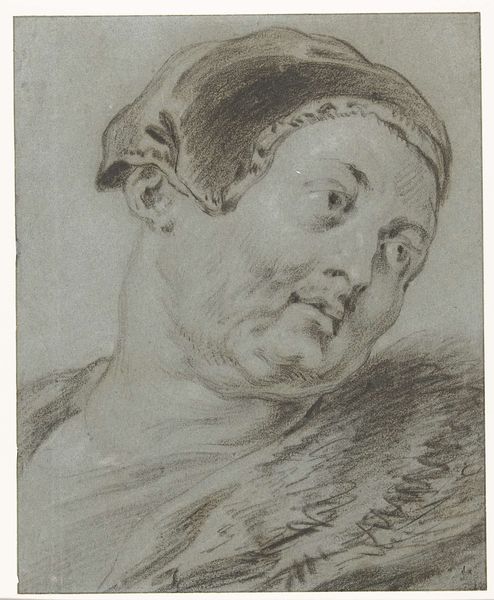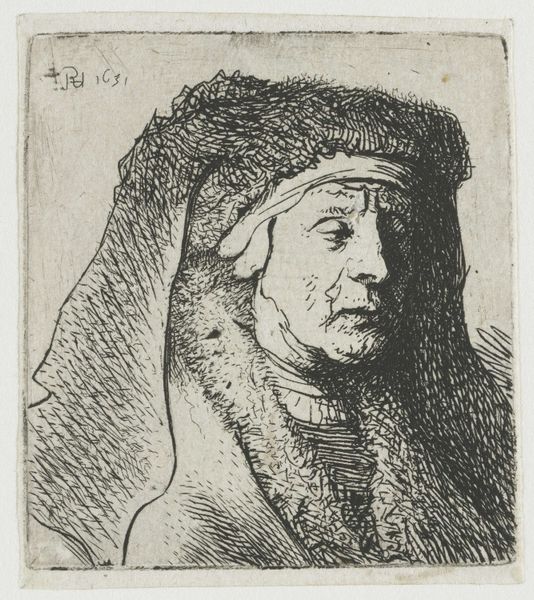
Dimensions: height 240 mm, width 169 mm
Copyright: Rijks Museum: Open Domain
Editor: This engraving, "Portret van Pieter Cornelisz. van der Morsch" by Abraham Delfos, dating roughly from 1741 to 1820, strikes me as…satirical. The subject’s exaggerated features and jester-like attire are quite arresting. How do you interpret this work, especially given its creation so long after the Dutch Golden Age? Curator: It's more than just satire; it's a commentary on societal roles and perhaps a critique of power structures. Consider the historical context: Delfos created this engraving long after the Golden Age, during a period of political and social upheaval. Pieter Cornelisz. van der Morsch, or "Piero," as he was known, was a prominent figure in Leiden's rhetoric society. Delfos may be using caricature to playfully subvert this respected status. Notice how the choice of portraying him as a "fool" is a powerful one. Does that dynamic spark other possible meanings for you? Editor: It does. To see someone of standing depicted in this way is interesting. Almost as if he’s saying that this man takes himself way too seriously. But the text at the bottom references ‘Love is the Foundation’. Could this be about holding onto joy and fellowship during politically divisive times? Curator: Precisely! The inscription offers a crucial counterpoint. The "fool" may represent not absurdity but perhaps the embrace of truth through wit and the reminder of the importance of community bonds. Delfos’ choice of printmaking, a medium accessible to a wide audience, also democratizes the critique. Editor: So, Delfos might be using Piero’s image to offer a broader reflection on social structures and the enduring relevance of certain roles within a community? Curator: Exactly. It questions not just an individual but an entire social order. This reminds us how portraits can also perform beyond commemoration. What would you say you have taken from our exchange about this work? Editor: It’s made me realize how crucial it is to really unpack historical context when we study a piece. This is not simply a portrait of one man. The artist seems to be sending more of a message through Piero, his social position, and the era in which he lived. Curator: Indeed. It is a complex intersectional narrative captured in ink. Always remember that the power of art resides in its ability to provoke, challenge, and engage with societal dialogues.
Comments
No comments
Be the first to comment and join the conversation on the ultimate creative platform.
